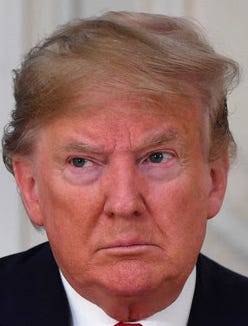How Trump is liable for fraud even though no one was hurt
He was never a successful businessman. He was always a con artist.
Friends,
Today, New York Justice Arthur F. Engoron found Trump liable for conspiring to manipulate his net worth and ordered him to pay a penalty of $355 million — which could wipe out his whole stockpile of cash.
Trump’s lawyers had argued — and will surely argue on appeal — that there was no fraud because there was no victim and no one had been harmed. In a statement on Friday, a Trump Organization spokeswoman noted that the company had “never missed any loan payment or been in default on any loan” and that the lenders “performed extensive due diligence prior to entering into these transactions.”
At trial, Trump’s lawyers called as witnesses the president’s former bankers, who testified that they had been delighted to have Trump as a client.
So where’s the fraud?
Trump’s lenders thought they were making safer loans than they were because Trump inflated the value of his assets to make it seem like he had more collateral than he actually did, and therefore he was a more reliable borrower than he actually was.
Nearly half of the $355 million penalty imposed on Trump today represented the interest that Trump saved by exaggerating his assets so that he could get loans at lower interest rates (the rest represented Trump’s profit on the recent sale of two properties, which the judge has now clawed back).
Last September, Justice Arthur F. Engoron found that Trump overvalued his assets by as much as $2.2 billion, creating a “fantasy world” of indefensible valuations. The Trump Organization treated rent-regulated apartments as being worth as much as noncontrolled apartments. Trump’s claim that he had a 30,000-square-foot residence in New York, when the true number was only 11,000. And so on.
That the banks that lent Trump money were lucky enough to get repaid in full is irrelevant. Their risk of not getting repaid in full was in fact much higher than they assumed it was, due to the over-valuations. Getting lucky is no excuse for fraud.
Trump declared on social media that he borrowed money from “sophisticated Wall Street banks” that wouldn’t have been easily deceived by fraud. This claim is belied by the fact that for many years only one major Wall Street bank, Deutsche Bank, was willing to deal with him at all — and eventually Deutsche Bank also pulled the plug, citing concerns about his financial claims.
In 2016, Trump told the American people they should vote for him because he was a brilliantly successful businessman. Some still believe this.
He wasn’t a successful businessman. He was a con artist. Not only did he get loans he wouldn’t have gotten if he’d been honest about the value of his assets, but he also left behind him a long line of people who were conned out of their money. He conned hundreds of young people and their parents into paying to attend his near worthless Trump University. He conned contractors to work for them and then stiffed them.
By his own account, in 1976, when Trump was starting his career, he was worth about $200 million, much of it from his father. In 2016 he said said he was worth some $8 billion. If he’d just put the original $200 million into an index fund and reinvested the dividends, he’d be worth $12 billion.
We now know that the old joke was, in Trump’s case, the real truth: He wasn’t a real business genius; he just played one on TV.
**




Hoping this craters his run for Dictator in Chief!
A simple analogy to these fraud laws is speed limits. You'll get a ticket even if you hit no one. Same with a stop sign.
These laws exist to protect society from reckless individuals out for themselves. Without them nobody would want to drive there.
A major financial center requires especially strong laws, and must enforce them. Without them nobody would want to do business there.
Source: "Common Sense for Dummies, 2nd Ed". Someone sent me a copy; I don't know why.